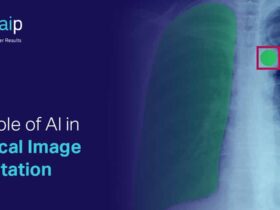Spiking Neural Networks (SNNs) hold significant promise in developing energy-efficient and biologically plausible artificial neural networks. However, a critical challenge is their limited ability to handle sequential tasks such as text classification and time-series forecasting. This limitation primarily stems from the lack of an effective spike-form positional encoding (PE) mechanism, which is crucial for capturing the order and timing information in sequential data. Overcoming this challenge is essential to enhance the applicability of SNNs in real-world AI tasks, where processing complex sequences with high accuracy and efficiency is vital.
Current approaches to improving SNNs involve adapting techniques from conventional artificial neural networks (ANNs), such as backpropagation and batch normalization. While these adaptations have enhanced SNNs’ capabilities in some areas, they fall short in sequential modeling. Specifically, SNNs struggle with indexing and rhythmic pattern recognition due to their event-driven nature and the incompatibility of traditional positional encoding strategies, like sinusoidal PE, with spike-based communication formats. This incompatibility results in non-spike and repetitive outputs, reducing the performance of SNNs in sequential tasks and making them less efficient for real-time applications.
The researchers from Microsoft and Fudan University introduce a novel positional encoding technique for SNNs, termed CPG-PE, inspired by central pattern generators (CPGs) found in the human brain. CPGs are neural circuits that produce rhythmic outputs without requiring rhythmic inputs, making them an ideal model for encoding positional information in a biologically plausible way. This innovation leverages multiple neurons to generate spike train patterns, providing a hardware-friendly and efficient means of encoding positional information in SNNs. This method overcomes the shortcomings of existing techniques by ensuring that positional information is encoded in a spike-form that is compatible with SNN architectures, thus enhancing the performance of SNNs across various sequential tasks.
The CPG-PE technique uses N pairs of CPG neurons, forming 2N cells that operate based on coupled nonlinear oscillators. These oscillators are mathematically modeled to generate specific spiking patterns when the membrane potential exceeds a set threshold. The resulting spike trains encode positional information, ensuring the uniqueness of each position at every time step. This technique is implemented in a hardware-friendly manner, where the input spike matrix is combined with the CPG-encoded positional information. A linear layer is then used to map the feature dimensions back to their original size, maintaining the integrity of the spike-form data.
The CPG-PE technique significantly enhances the performance of Spiking Neural Networks (SNNs) across a variety of sequential tasks, including time-series forecasting, natural language processing, and image classification. In time-series forecasting, SNNs equipped with CPG-PE outperformed their counterparts lacking positional encoding, achieving higher R² values and lower Root Squared Error (RSE) across multiple datasets. In natural language processing tasks, the method improved accuracy on several benchmark datasets, demonstrating its effectiveness in capturing positional information. Additionally, in image classification tasks, the CPG-PE method provided notable improvements in accuracy, even when applied to image data lacking inherent sequential order. These results underscore the technique’s versatility and efficacy in enhancing SNNs’ capability to process sequential information more accurately and efficiently.
In conclusion, the CPG-PE approach represents a significant advancement in the field of AI by providing a biologically inspired and hardware-friendly positional encoding mechanism tailored for SNNs. By addressing the core challenges in sequential task processing, this technique improves the accuracy and efficiency of SNNs, making them more applicable to real-world scenarios that require handling complex sequences. The potential impact of this work is substantial, as it bridges the gap between biologically inspired models and modern deep learning techniques, offering new insights into neural computation principles.
Check out the Paper. All credit for this research goes to the researchers of this project. Also, don’t forget to follow us on Twitter and LinkedIn. Join our Telegram Channel. If you like our work, you will love our newsletter..
Don’t Forget to join our 50k+ ML SubReddit
Aswin AK is a consulting intern at MarkTechPost. He is pursuing his Dual Degree at the Indian Institute of Technology, Kharagpur. He is passionate about data science and machine learning, bringing a strong academic background and hands-on experience in solving real-life cross-domain challenges.











